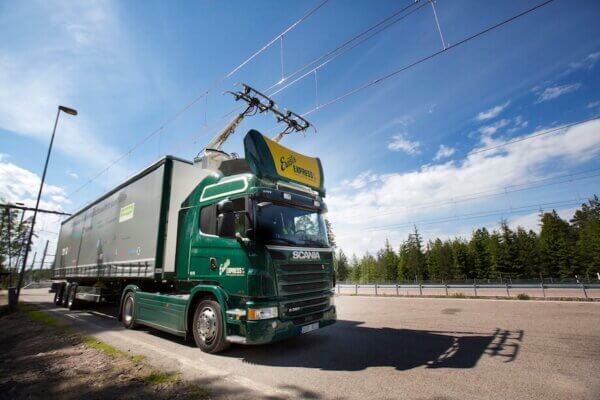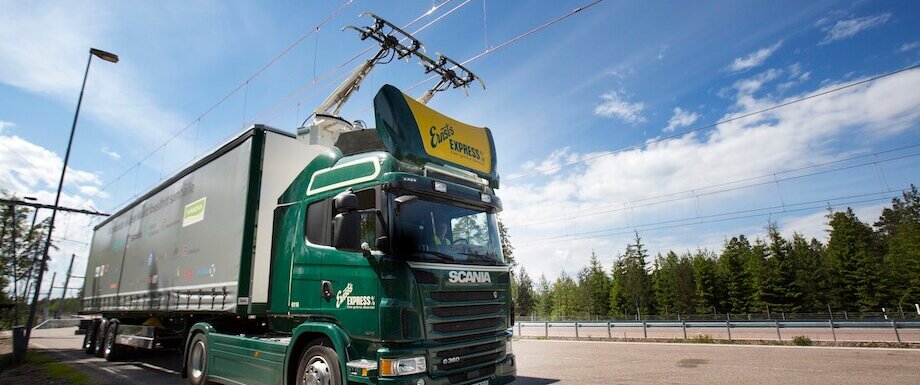The inevitable stop at the grimy just-off-the-exit gas station will eventually be a nostalgic memory. Tomorrow’s roads will fuel our electric cars as we drive over them.
A new electric road in Sweden—the world’s first—employs the magic of inductive or wireless charging. An induction coil embedded in the road sends out electromagnetic energy. A vehicle driving over the road with a compatible coil can harness that energy and turn it into electricity. Voila! A fill-up in motion.

Gävle, Sweden
Photo: Tobias Ohls 2016. Via Scania/CC 2.0
This technology may seem incredibly futuristic, but you may actually have had it in your bathroom for years. Oral-B rechargeable toothbrushes have used inductive charging since the early 1990s.
The Swedish project is part of that country’s commitment to be completely fossil-fuel free by 2030. “Sweden will be one of the world’s first fossil-free welfare countries,” states a government website. “Not only because it is morally right with respect to future generations, but because it makes economic sense.”
This massive effort will force innovation in all levels of Swedish life, but transportation and travel is a key target. The Swedish company Scania built the truck that was the first to travel the electric road. Sweden’s government concedes that systemic changes are required to reduce overall transportation miles. “Adequate change can only be accomplished through a society that is more transport-restrictive,” they say.
But, people and goods must be moved, so Sweden is also looking at technological innovations, infrastructure investments, and changes in the law to reduce fossil fuel use. The government has proposed these steps—which should be adopted not just by Sweden but by every country. The iniatives include:
- Increased bio-gas production
- Investments in public transit
- Introducing a carbon dioxide tax
- Higher taxes on fuel and on airline travel
- A road-wear tax for heavy vehicles
- Tax deductions for low-emissions vehicles
- More money for railway maintenance
- Energy labelling of vehicles
- And, building an electric charging infrastructure, including projects like electric roads.
Clearly, Sweden is leading the way, but other governments are turning to inductive charging—including one you probably wouldn’t expect.
Gumi, South Korea, began running city buses that are powered by wireless charging facilities above the buses, at six different points along its route. Goodbye, unsightly electric trolley wires!
McAllen, Texas, became one of the first U.S. cities to deploy public buses charged wirelessly. The buses are charged when they sit atop a pad on the bus terminal roadway. While the passengers are boarding the bus, the bus is onboarding the power to get them to their destination. In the official ceremony announcing the buses, McAllen city officials cut a gas power hose rather than a ribbon. Nice one, McAllen!
Wireless charging isn’t the only innovation being proposed for the world’s roadways. An inventor in Sandpoint, Idaho is developing solar roadways. They wouldn’t charge vehicles, but they would generate power when they weren’t being driven over.
As the pace of climate change quickens, we’ll need innovations like these—so travel itself doesn’t become a memory.










































Leave a Reply